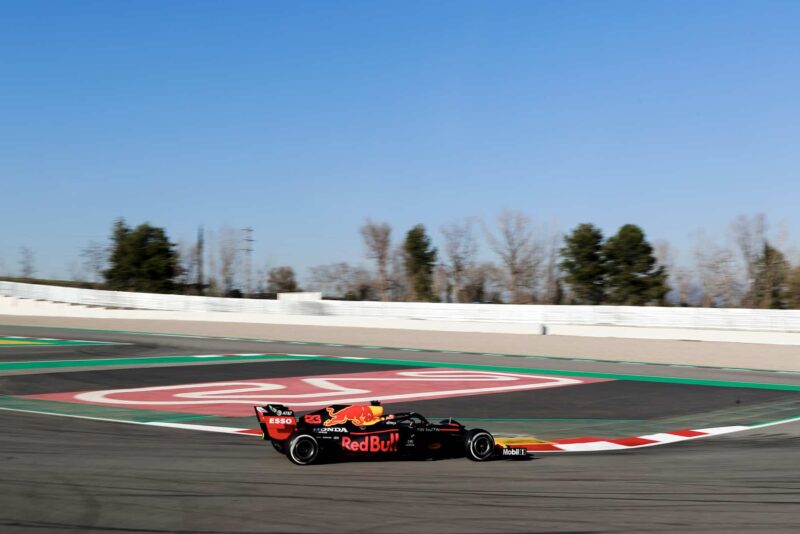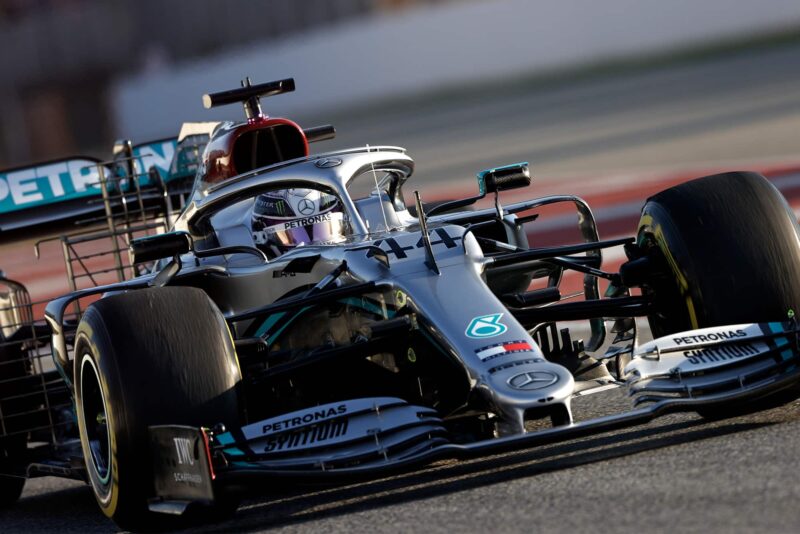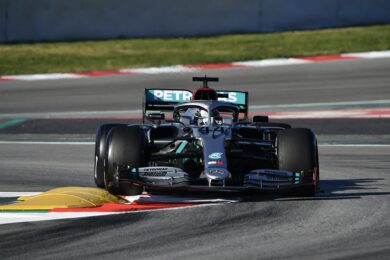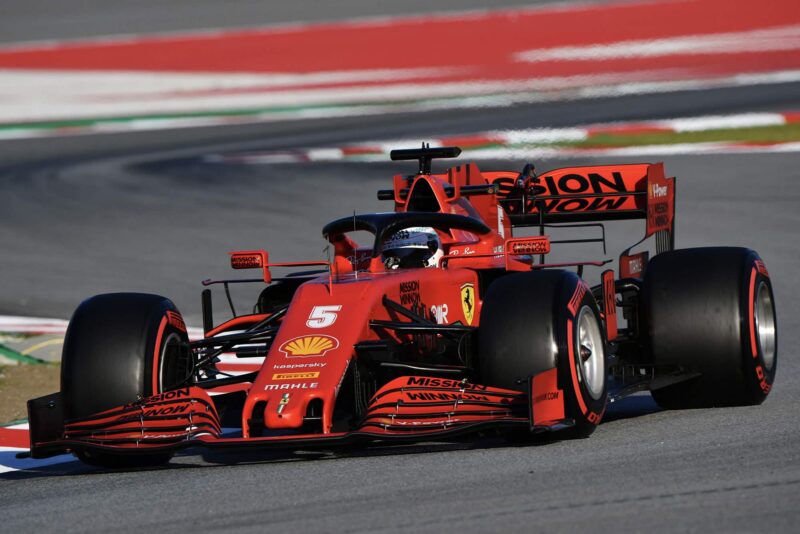Bottas said he was pretty satisfied with the car but that there was still work to do on getting the balance consistent between the different speed corners.
This wide range of corner speeds is why the Circuit de Catalunya is such a good test venue – and it’s totally normal for even the best cars to need further work in combining high speed stability with low speed response.
This will be the main priority for the team into the second week, more so than any further trialling of the radical new DAS (double axis steering system) which alters the toe angle of the front wheels by way of sliding the steering wheel up and down the column.
It is triggered by a button and then adjusts between its two positions without the driver physically pulling and pushing on the wheel. It was noticeable that it was only occasionally being used and the likelihood is that it will bring greater benefits on tracks with longer straights than this. Although it’s been cleared legal by the FIA for this year, it’s been banned in advance from ’21.

Red Bull are closest to Mercedes but will have to address issues in week two
Motorsport Images




